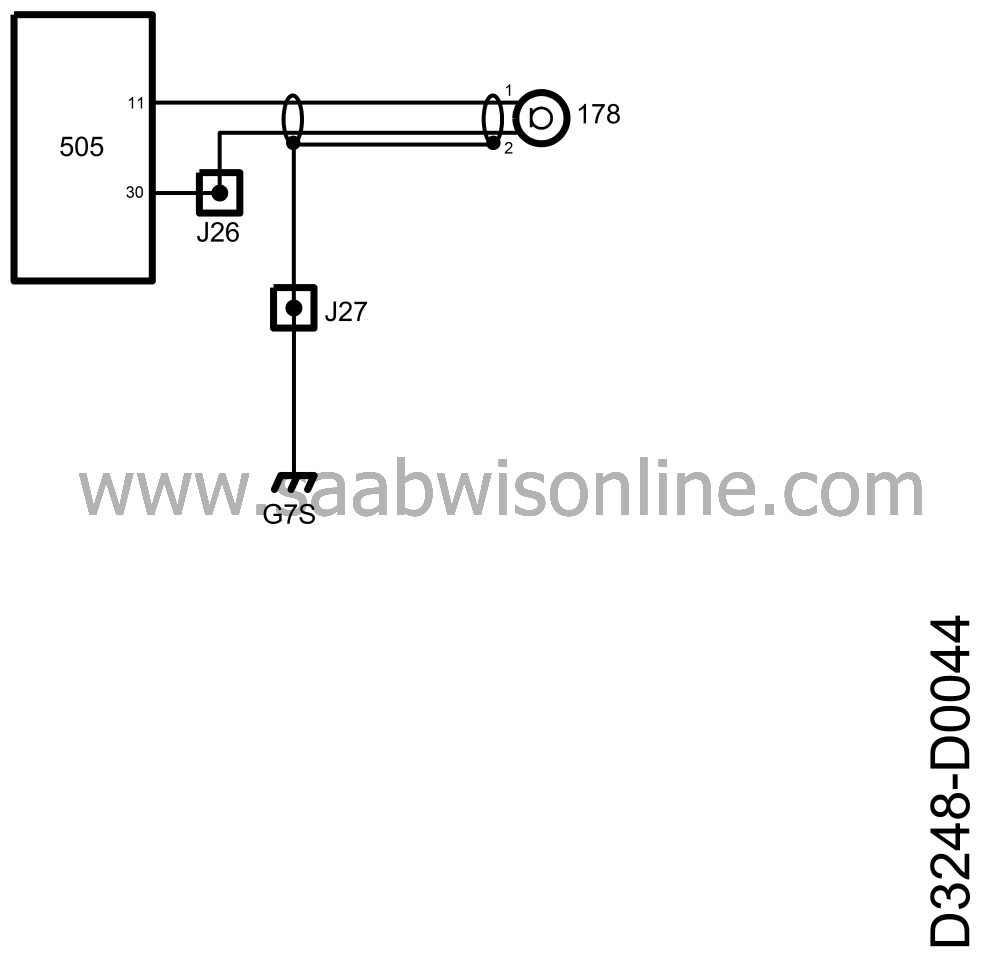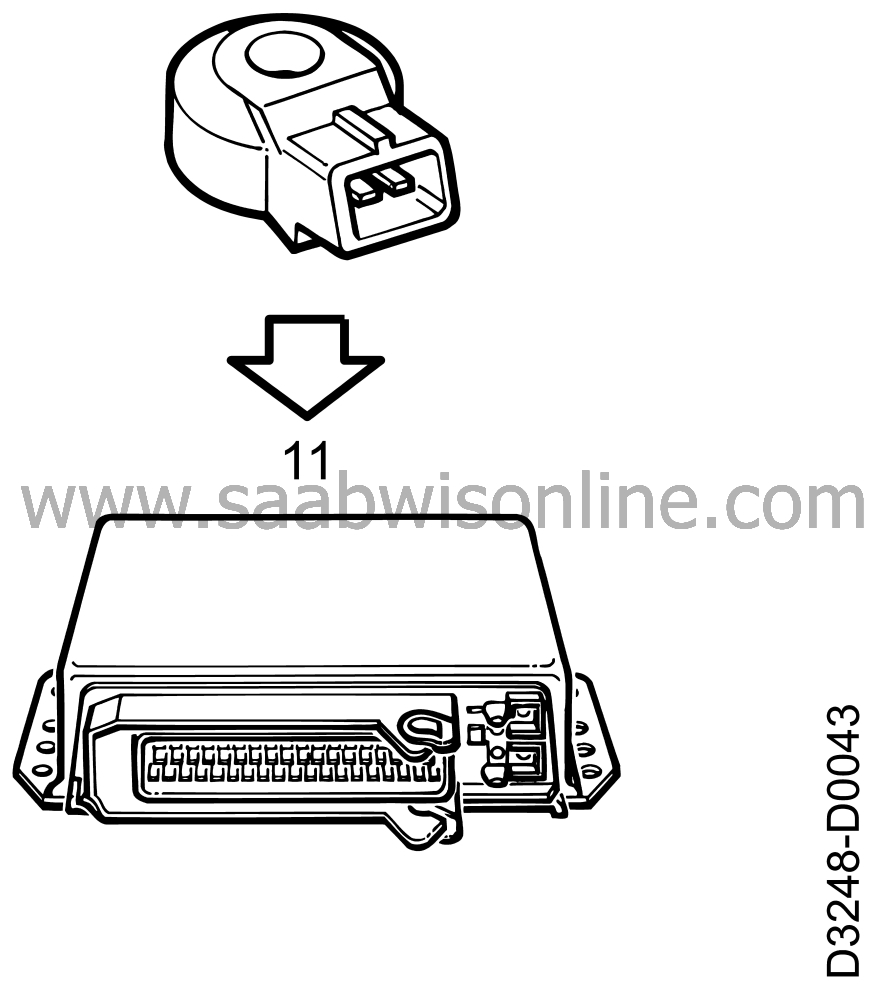Principle of operation, knock control
| Principle of operation, knock control |

| Knock Detector |
The knock sensor contains a piezo-electric element which is characterized by an ability to produce electric current when subjected to pressure.
When knocking occurs in any of the cylinders it gives rise to heavy vibration and movement in the material which subjects the sensor to pressure. In the case of severe knocking, the sensor can produce a current of up to about 500 mV.
The knock sensor is affixed to the engine block by means of a through bolt. Tightening torque is extremely important for proper operation of the sensor and should therefore be strictly observed.
Tightening torque: 22 Nm (16 lbf ft).
Pin 11 of the control module receives information from the knock sensor as to whether knocking occurs in the cylinder block. The knock sensor is grounded, together with other sensors, via pin 30 of the control module.
Since the signal voltage of the knock sensor is extremely low, the signal lead is screened. This reduces the risk of unwanted signal sources inducing a voltage in the lead and supplying the control module with spurious information.
If the voltage in the signal lead exceeds 250 mV, the control module will interpret this as serious knocking and retard the ignition in the cylinder concerned.
In the event of a break in the sensor circuit, the CHECK ENGINE lamp (MIL) will light up at the same time as the control module switches to Limp-Home mode and retards the ignition by 13° in all cylinders (at >2000 rpm).



